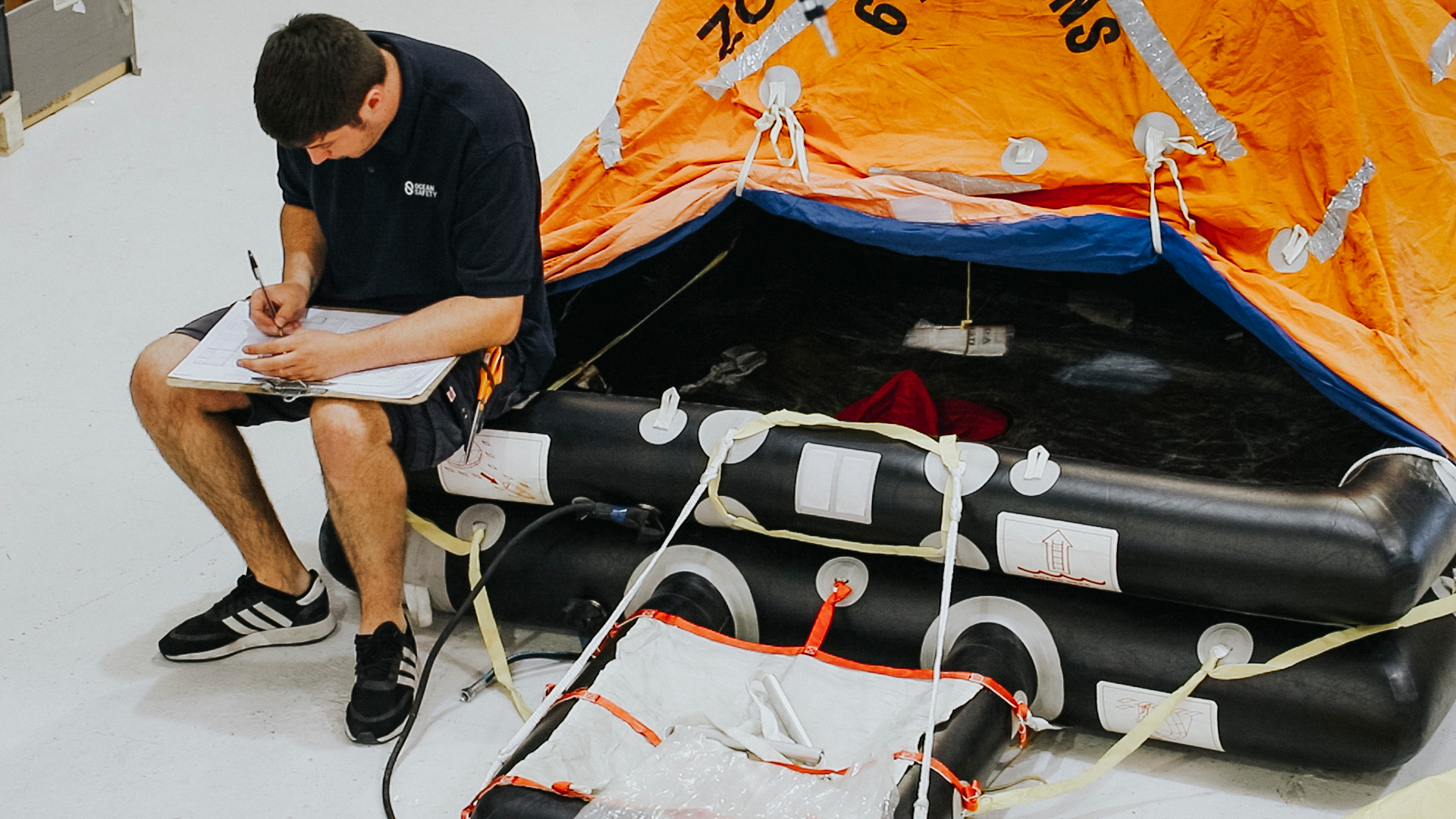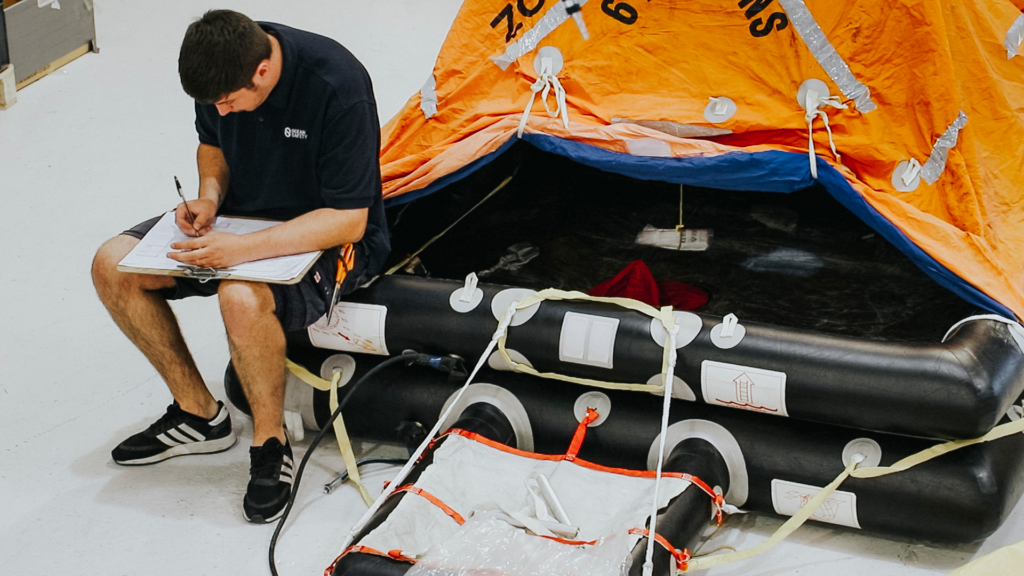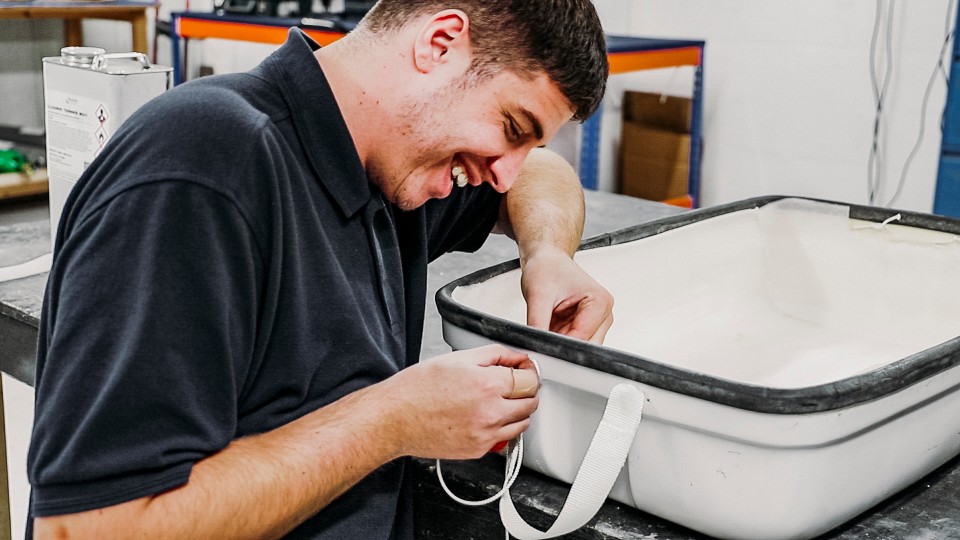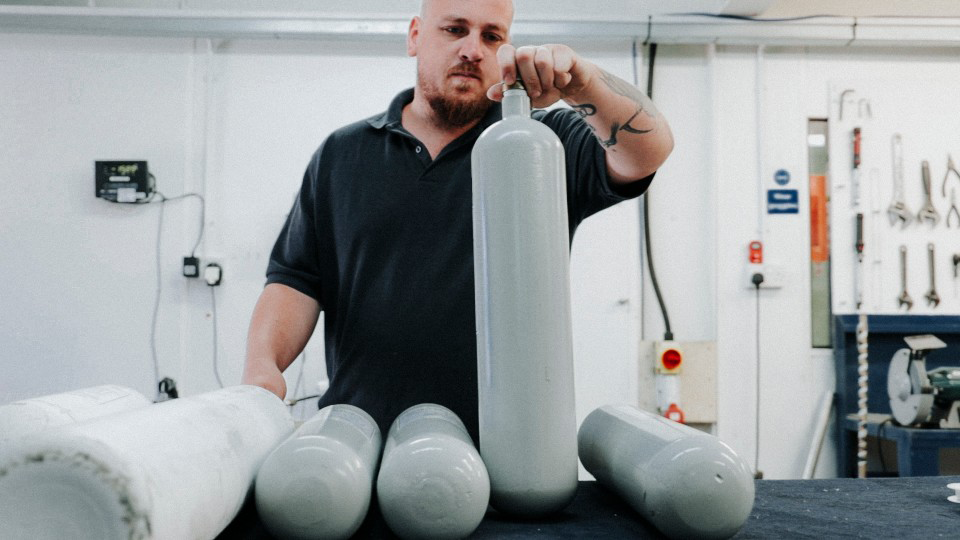
What Happens During a Liferaft Service?
We always encourage our customers to come in and familiarise themselves with their liferaft during the service, alternatively, you can read what happens during an Ocean Safety liferaft service.
How to book in your liferaft for service:
- Please contact your local Ocean Safety branch/office or complete the form on our website and we will take care of the whole process.
- See our map to find approved service centre locations.
Customer correspondence:
- The Liferaft is received and registered and the customer is issued a service/
repair number. - The liferaft logbook is completed. This provides proof that the liferaft has been opened and tested.
- The liferaft inspection is conducted using the Ocean Safety approved inspection
survey form. - A certificate of re-inspection is issued to the customer.
- The full documentation for the service is archived according to regulations ISO9650 for leisure use and IMO resolution A761(18) for SOLAS commercial use.
- A detailed invoice is sent to the customer.



Service procedure:
- The container or valise is opened, and the inflation system disconnected.
- The liferaft is removed from the container or valise.
- The container or valise are cleaned, and fiberglass or valise is repaired as required.
- The container or valise decal labels are renewed.
- The liferaft is inspected inside and out.
- The emergency pack contents are checked, and items replaced if expired according to regulations.
- The liferaft carcass is inspected and tested.
- The cylinder operating head and valve, and release wire are inspected.
- The inflations systems and high-pressure hoses are inspected.
- The CO2 cylinder is checked and weighed for correct CO2 & N2 contents.
- The liferaft is deflated, repacked into the container or valise and prepared
for dispatch.
Testing process:
- The liferaft is inflated with compressed air and pressure tested, including a 60-minute working pressure test of the lower buoyancy chamber, upper buoyancy chamber and arch chamber.
- If the liferaft is equipped with an inflatable floor, this is also pressure tested for 60 minutes.
- The liferaft is subjected to specific tests at various intervals according to IMO international regulations.
- Gas inflation stress test (GI) is conducted every 5 years using the liferaft’s own CO2/N2 cylinder to inflate it.
- A ‘Necessary Additional Pressure’ test (NAP) at double the working pressure rate is conducted at 10 years then annually thereafter.
- A floor seam test (FS) is performed to check the seams of the internal floor and is conducted at 10 years and annually thereafter.
